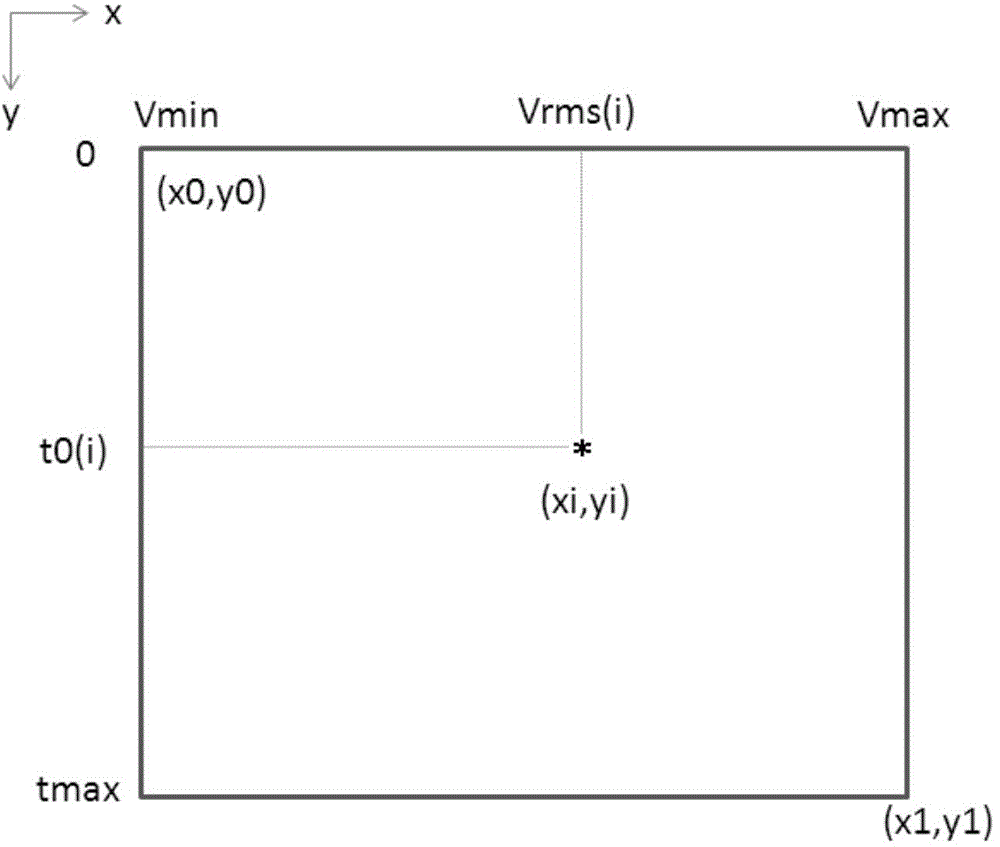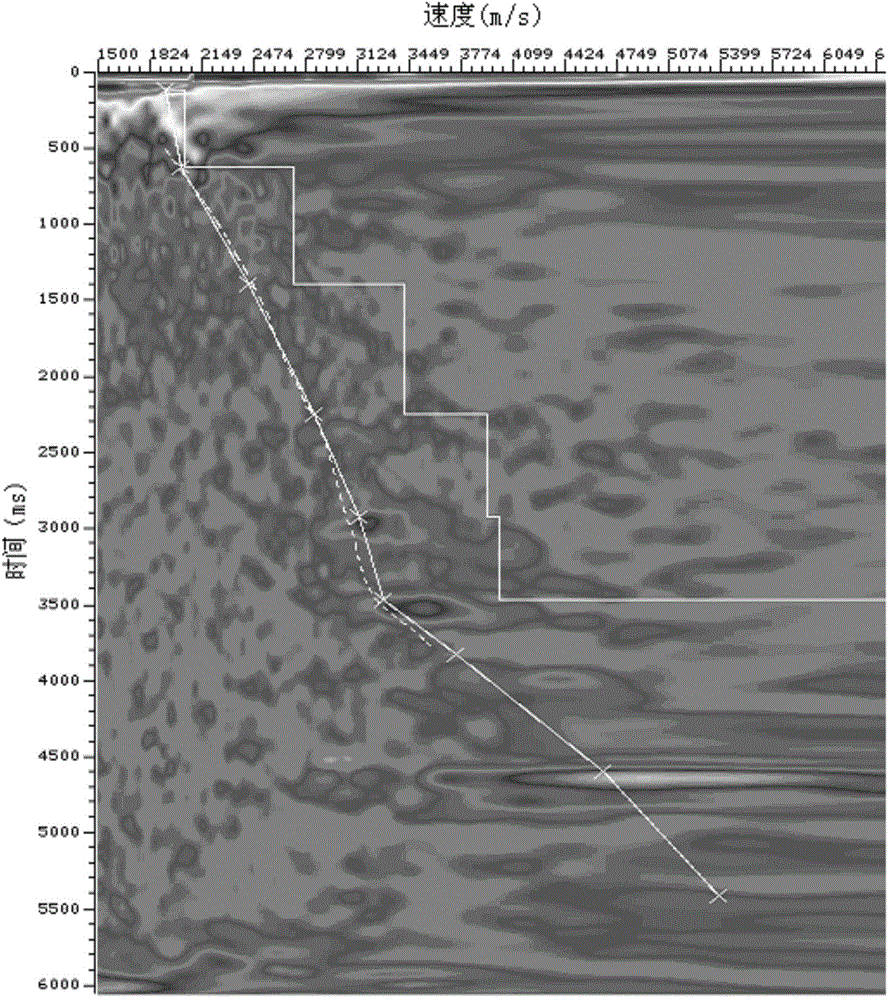Well-constrained velocity spectrum pickup method for low-SNR (signal-to-noise ratio) seismic data
A seismic data and low signal-to-noise ratio technology, applied in seismic signal processing and other directions, can solve the problems of low speed picking accuracy, no energy cluster, weak energy, etc., to reduce blindness and randomness, improve accuracy, and improve methods Effect
- Summary
- Abstract
- Description
- Claims
- Application Information
AI Technical Summary
Problems solved by technology
Method used
Image
Examples
Embodiment Construction
[0034] Below in conjunction with accompanying drawing, the present invention is described in further detail:
[0035] The invention aims at the problem of low precision in picking up velocity spectrum of seismic data with low signal-to-noise ratio, and improves the velocity analysis precision.
[0036] Such as figure 2 Shown, the inventive method comprises:
[0037] (1) Logging preprocessing: input the acoustic time difference or acoustic velocity, and output the corrected acoustic velocity;
[0038] The main contents of acoustic logging preprocessing are borehole effect correction and acoustic wave drift correction. The purpose of borehole effect correction is to eliminate the influence of mud immersion and borehole diameter on acoustic logging; Well logging data, so that the sonic logging is consistent with the layer velocity measured by VSP for the same section of formation.
[0039] (2) Shallow compensation and downward extension of acoustic logging data, and the obtai...
PUM
 Login to View More
Login to View More Abstract
Description
Claims
Application Information
 Login to View More
Login to View More - R&D
- Intellectual Property
- Life Sciences
- Materials
- Tech Scout
- Unparalleled Data Quality
- Higher Quality Content
- 60% Fewer Hallucinations
Browse by: Latest US Patents, China's latest patents, Technical Efficacy Thesaurus, Application Domain, Technology Topic, Popular Technical Reports.
© 2025 PatSnap. All rights reserved.Legal|Privacy policy|Modern Slavery Act Transparency Statement|Sitemap|About US| Contact US: help@patsnap.com



